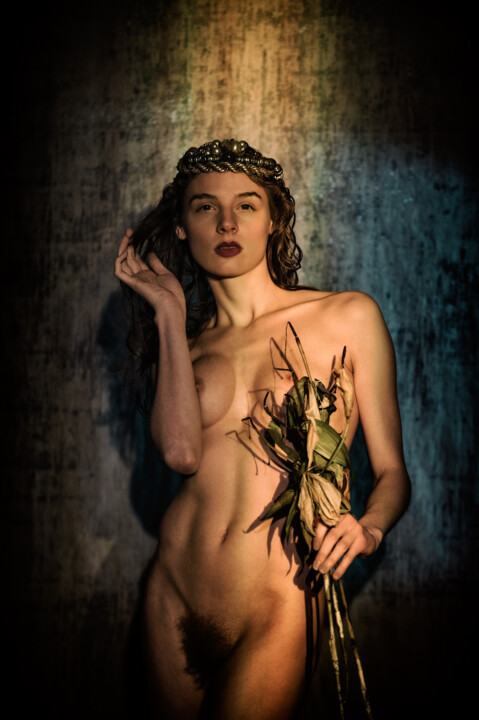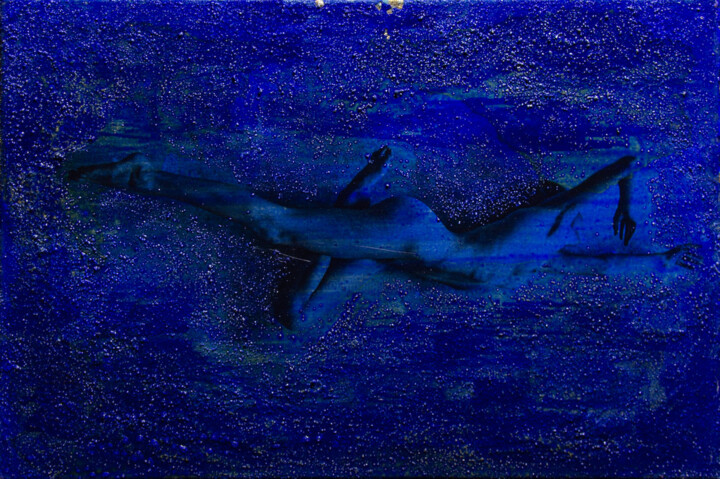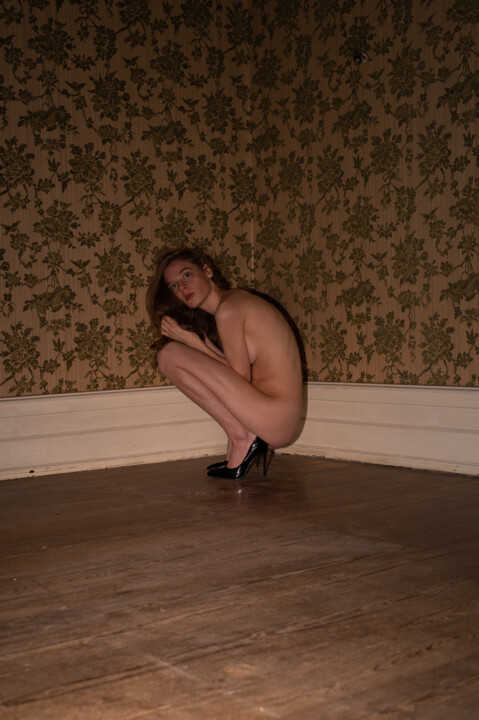What inspired you to create art and become an artist? (Events, feelings, experiences...)
My very great passion, indeed vocation, is photography, light painting, observing and capturing moments in the passage of time. I have been taking photographs since I was six years old. Unbelievable. This experienced time! I took my first pictures of my first schoolmate's backyard. Don't misunderstand: It really was the backyard of her parents' store. "Fur Brown"; with a swing. She also gave me my first extra-familial kiss. It was while rocking in a wash bowl. A big oval one made of plastic. Seventies blue. We took turns swinging. We had nothing else. We were creative early on. I am an artist who values craftsmanship and great general education. I was brought up in an old-fashioned and strict sense, full of human values and basic ethical and moral traits that led me to justice, humanity and a cosmopolitan attitude.
What is your artistic background, what techniques and themes have you experimented with so far?
Somewhere between the ages of eight and eleven, I went to a photo lab course for kids. Probably initiated by my father, who was a lifelong excellent photographer himself. I have forgotten everything I learned in that course. Later - my mother gave me my first SLR camera; a "Revue". I loved it and took pictures of trees. I loved those too. I still do. Later - my mentor came and told me to photograph his works. He was head director at the theater; I learned so much about theater from him and so much from other greats that hardly anyone knows today. I became a singer, director and set designer. Later - I photographed the first choreographies. Having gone through dance training myself, I quickly realized the magic of this branch, of the people practicing it. And finally, in Munich, I became a permanent guest at the Bavarian State Ballet. Now, meanwhile, experienced in dance photography, recognized, praised, I am proud to be able to accompany this great, lively, human-respecting and so indescribably wonderful world. Theater photography eventually turned into an interest in photographing people in person. But there is no limit to what you can do.
What 3 aspects distinguish you from other artists and make your work unique?
The combination of painting and photography, which is shaped by my work as a theater maker. To be broadly positioned, because versatile artistically out and imagined. A close collaboration with my muse, because life partner.
Where does your inspiration come from?
Coming from a medical-theological household, I received a broad education. In the process, I was often and gladly told that we can always draw the comparison between religion and theater, and was always gladly put in front of the statement that church is basically also theater. On the other hand, I always learned that theater is able to fulfill the religious needs of a group of people, it acts similarly with its rituals, and anyway, where the church is supposed to facilitate life, it explains life, comments on it, and thus in its own way necessarily also contributes to facilitating it. Perhaps a little more on the way of a catharsis, where church makes more blunt. But with it the picture art hangs between both: That it makes contemplative in its catharsis.
The theater as a mirror of the world is the space for the things I photograph. For me, the stage is a framed place where the most beautiful and terrible stories can be told moving and unmoving. Mostly moving. All my life I have tried to understand the laws of this place, to deal with them, to learn and apply them. I have become a singer, a director and a set designer, and I understand my life through art, which is able to mirror this life in a frame. In this respect, wherever I can, I use the means of theater, of the stage (understood as a place of performance), of representation. I create a space for my images, or I look for a space that resembles the one I have designed, or I find a space that carries my image within it (space as the place of the image). I try to grasp the content of my images beforehand, so that I do not have to create them afterwards. Like on stage, I am the person of planning and rehearsal and observation; improvisation is part of it, but as a means of salvation.
What is your artistic approach? What visions, sensations or feelings do you want to evoke in the viewer?
Happy Grief.
I don't distinguish between the pigeonholed areas in my photography. The question "Can you also...? I thought you only do art!" is very exhausting in the long run and reflects the increasingly stunted awareness of intellectual-artistic achievements. I would like to point out explicitly again and complain: If a person, a viewer of my pictures, or also a viewer of any pictures, tries to classify these into a category, then speaks from it nevertheless first of all the desire to attain a security in the own opinion. Category thinking simplifies behavior patterns. If a picture belongs to portrait photography and a head of a person is dominantly recognizable, his personality even seems to have been representable, then it is a portrait. If a portrait leaves this set frame, then one tries to classify it immediately into another scheme, into the people photography, the fashion photography, should the person on the picture be naked, even into the nude photography. It is not at all possible to bring a work of art of the fine arts, such as a painting, a photograph or the like, into dialogue with a viewer without the passage of time evaluating a representational art situation. The stirrings in the viewer, who must likewise function as spectator, can hardly be described as stationary. And already because the work hopefully should not only cause a reaction, better still a reflection, but must also cause it in any form, a situation immanent to the conceptual explanation of the performing arts inevitably occurs. In this sense, my work also aims at clarifying this situation. Not only that, as mentioned above, theater and its forms always require the visual arts for their realization, but also, conversely, the visual arts always contain the aspect of representation in the manner of the performing arts.
What is the process of creation of your works? Spontaneous or with a long preparation process (technical, inspiration from art classics or other)?
Particularly important in photography for me is the realization that good pictures are created only when I "love" what I am photographing at that moment or manage to learn to love it. Then the apparatus is only the mediator that depicts the mental connection to the photographed subject or object. Important is and remains for me in photography also that the images are always created through the viewfinder and remain unprocessed or only developed; cleaning and very rarely a careful cropping I allowed myself. In my pictorial language I now seek, as a temporal now, to depict the themes through photography theatrically real, then to explain them aesthetically with the means of painting, which are also the means of stage design and costume design. My experience as a director helps to turn the inner attitudes of the performers outward and to control them to a degree necessary for the work. Another level is the constant desire, through the painterly treatment, to constitute a unique work situation that resembles the uniqueness of a theatrical performance, which, although predetermined, always remains unpredictable in its execution.
Do you use a particular working technique? if so, can you explain it?
In the tradition to painting and theater moves reflectively searching my photo art. The exciting thing for me remains the search for the appropriate means, without losing sight of photography, but still admiringly trying to reconstruct the old traditional techniques, using evasive and possible substitute techniques. It remains a way, not a goal. Because with the goal an end of the development and the creative linguistic would be reached, which would result in a solidification in the art, an insignificance of the artist. And I observe and try to explain the tangle of sketches and performance ideas, try to see, try to check whether my staging was the right one, whether it was and is and remains coherent in itself. If all this succeeded, then it raises man above himself and he smiles inside, very quietly, and sees himself without fear. And I observe. I see stories in the captured nus, which can usually be told without specific technique. And yet it is an interplay of rehearsal moments and finished productions. I observe a manifestation: the highlighting of the invisible boundary in theater between spectator and performer. I always loved this boundary, which was only crossed by the theatrical smells of the opening curtain: the smells of make-up, of burning filters, of dusty soffits and sweaty costumes. And finally, this practices the appeal to tradition of artistic work, in that I always carry within me the attempt to crave direct contact with the creative process. To work analogically whenever it becomes possible. But also to simulate the analog activity like a theatrical reflection of time, to play, in which alone certain activities resemble those of old production techniques; there however evenly not only the painting, also for example the imitation of old development processes such as the swinging of the glass plates under water or the distribution of the chemicals by flowing movement (choreography) on the glass surface, the solidification of which shows up as a resinous following layer of shellac; also a sign for the traditional music reproduction by records. In view of the fact that fine art is defined in a way that differentiates it from the performing arts, whereby a fundamental defining feature seems to be the difference in the course of time, I contradict this quite emphatically.
Are there innovative aspects to your work? Can you tell us which ones?
I have a nostalgic view of art and would like to reinterpret my subjects with the feel of old masters and modern. To do this, I take specially created photographs as a basis for further processing with paint, gold leaf and shellac. I practice a renitence against everything that should be imposed on you: How I have to photograph, to stage. I still know: pictures exist without an audience, but they are relatively meaningless. Art exists without an audience, but how meaningful is it? It remains a border migration, always a renewal, a curiosity especially, and a love for the act and the thing to be represented.
Do you have a format or medium with which you feel most comfortable? if so, why?
In my paintings I build a boundary between viewer and creator with invisible, visible aids: The blurs, the intermediate materials of mirrors, glass, filters, gauze, and transparent fabrics. And more often, with a growing longing for the theatrical world, I again design a correction with paints, varnishes, layers of analog materials (such as shellac) or the performance alteration owed to the real time situation through films (especially instant films). For my icons on wood I stay in a portable format, usually Din A4 sizes. The motifs on canvas are larger, at the moment up to 80x120 cm. Angepeilt but also larger formats, it depends then on the motif.
Where do you produce your works? At home, in a shared workshop, or in your own workshop? And how do you organize your creative work in this space?
I have a studio for the realization of most photographic ideas, also for the preliminary discussion and the creation of a neutral creative space. The photographic work is viewed and prepared at home in the study, then the artistic processing with analog media takes place both at home and wherever necessary. To describe my creative process - should I dissolve from words, dissolve in images, smells, memories - I would write timelessness. I hear music, the prelude to Parsifal, the second movement of Bruckner's Eighth, Max Richter's film accompaniments, the raining of water on the earth, the blowing of autumnal winds.
Then I see the person or the idea of a picture and the urge to embed him or her in the elements that suit him or her arises and I begin to design a stage in my head for this one person, for this idea, to build it, to animate it with light, and I rehearse in my mind a piece written for him or her, and I rehearse it in the freedom of my own fantastic sense. And then, when I meet him, the human being, and they are: People, and this has a deep meaning, then I hope that a universe repeats the finished work and I just observe, amazed, that the person has forgotten the rehearsals, of which he was not a part after all.
Does your work lead you to travel to meet new collectors, for fairs or exhibitions? If so, what does it bring you?
For some time now, we have been exhibiting at art fairs and maintaining the contacts made there. Again and again there are interested people, potential later buyers, with whom enriching conversations arise during the exhibitions. Inspiration arises from dialogue, but also from the flood of images by other artists who come to these events and seek exchange.
How do you envision your work and career as an artist developing in the future?
Of course it would be nice if our art would be appreciated, if it would hit a "nerve" of our time and satisfy a spiritual need in the process. And, of course, we would like to exhibit even more of our artistic work, thus enabling further development in terms of ideas, materials or formats.
What is the theme, style or technique of your latest artistic production?
Stay yourself. Stick to your style. Who else? Where else? Our civilized, highly cultivated brain seems to be so much unable to think interstructurally and interexistentially. But that's where artistic work, and thus work that depends on thinking power, begins for me; where I am able to free myself from my usual certainties and to conflate states of being that seem unconflatable.
Can you tell us about your most significant trade show experience?
A very touching moment was when a businessman from East Asia saw one of our paintings at ARTe in Wiesbaden and appreciated it so much that some time later, on his next business trip, he then visited ARTe in Sindelfingen to see the painting again. He probably dreams of being able to afford it one day.
If you could have created a famous work of art history, which one would you choose? And why?
Many, especially those of the Pre-Raphaelites. Perhaps also the Danaë by Gustav Klimt. It has been with me all my life and for certain reasons it evokes very profound shocks in me.
If you could invite a famous artist (dead or alive) to dinner, who would it be? How would you suggest he spend the evening?
One? Too difficult, the decision. There are photographers like Paolo Roversi, Peter Lindbergh or Marc Lagrange as well as painters like Gerhard Richter, ... or theater makers like Jean-Pierre Ponnelle or John Neumeier or Pina Bausch or Angelin Preljocaj or, or, or. We would have an exciting and world-spanning round of talks. Or I would invite one after the other, because the exchange in private is usually more fruitful.

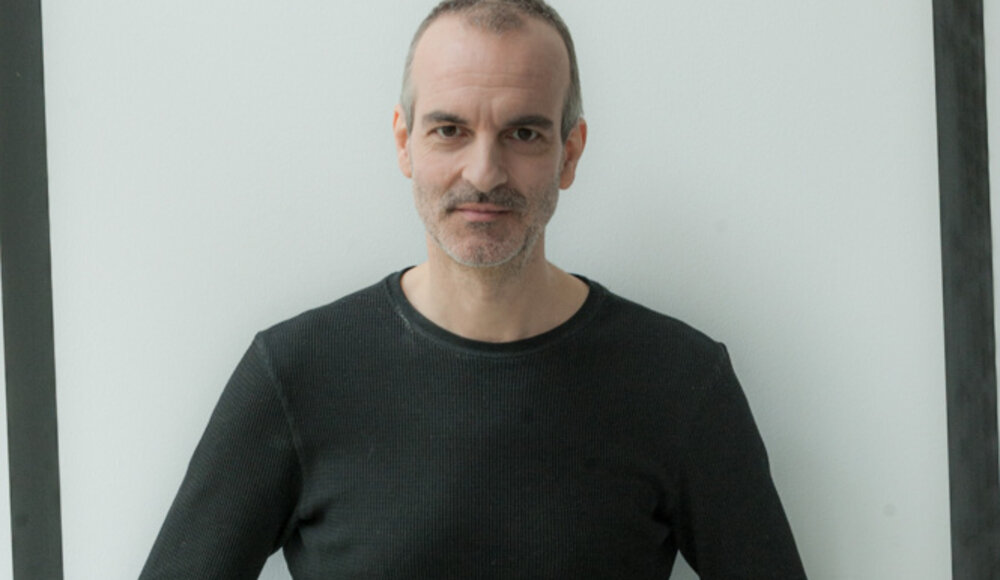





 Olimpia Gaia Martinelli
Olimpia Gaia Martinelli
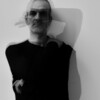
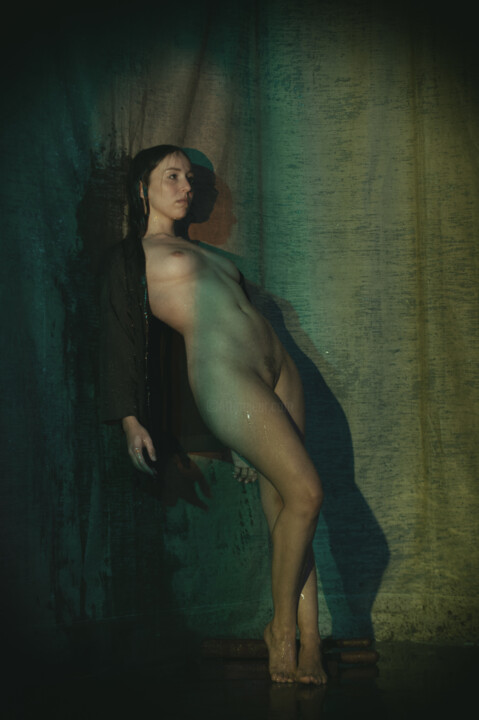
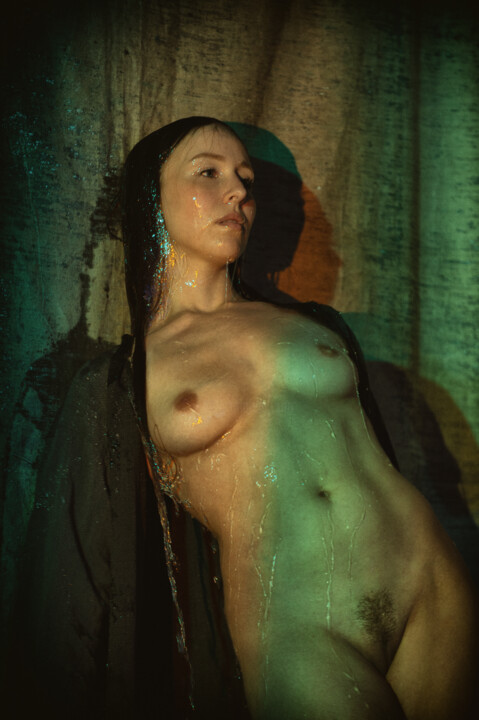
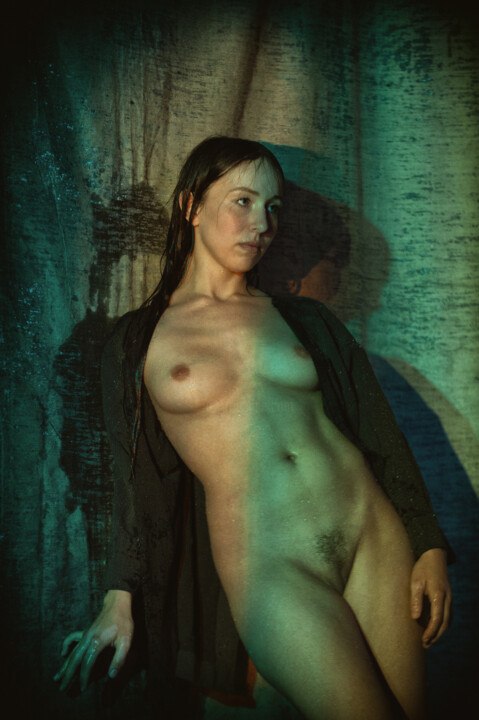
![Photography titled "NO Fashion [II]" by Stephan Joachim, Original Artwork, Digital Photography](https://www.artmajeur.com/medias/standard/s/t/stephan-joachim/artwork/17205751_210202-sjo4719-druck.jpg)
![Photography titled "NO Fashion [I]" by Stephan Joachim, Original Artwork, Digital Photography](https://www.artmajeur.com/medias/standard/s/t/stephan-joachim/artwork/17205742_210202-sjo4711-druck.jpg)
![Photography titled "Brabanda [II]" by Stephan Joachim, Original Artwork, Digital Photography](https://www.artmajeur.com/medias/standard/s/t/stephan-joachim/artwork/17203903_211209-sjo0522-entwickelt-druck.jpg)
![Photography titled "Brabanda [I]" by Stephan Joachim, Original Artwork, Digital Photography](https://www.artmajeur.com/medias/standard/s/t/stephan-joachim/artwork/17203849_211209-sjo0659-entwickelt-druck.jpg)
![Photography titled "Jehanne [II]" by Stephan Joachim, Original Artwork, Digital Photography](https://www.artmajeur.com/medias/standard/s/t/stephan-joachim/artwork/17203798_210102-sjo8711-druck.jpg)
![Photography titled "Jehanne [I]" by Stephan Joachim, Original Artwork, Digital Photography](https://www.artmajeur.com/medias/standard/s/t/stephan-joachim/artwork/17203768_210102-sjo8764-entwickelt-druck.jpg)
